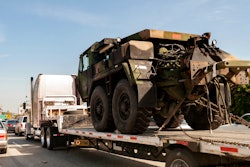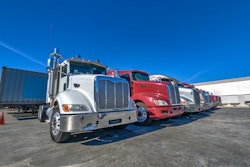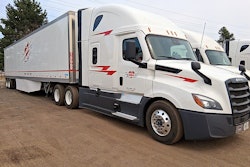Los Angeles and Long Beach port leaders will study further plans that would require drivers serving the ports to be carrier employees and replace or retrofit 16,000 diesel trucks working the harbor. Port officials announced their decision to develop a comprehensive plan June 27 after a closed-door meeting among port, business, transportation and labor leaders in Long Beach.
Clean Trucks Program stakeholders had planned to vote on the proposal in July, but now will complete a comprehensive plan that will take at least 60 days. In the works are an economic impact study and an industry task force to make recommendations on implementing the program. The proposal’s supporters include the Coalition for Clean and Safe Ports, which consists of environmental, labor, community and health organizations.
In support of the coalition, about 50 truckers formed a convoy from South Los Angeles to Long Beach to attend the meeting and hold a rally and press conference, says Barbara Maynard, coalition media coordinator. The convoy was led by a hearse to symbolize the people that have died because of diesel pollution, Maynard says. “Their own kids are getting sick from living in these communities,” she says of the truckers.
A fourth stakeholder meeting will be held after the plan is done, and then a meeting will be scheduled to vote on it, says Art Wong, a Long Beach port spokesman. Wong called accountability the biggest reason to have the owner-operators working the ports become employees of port contractors instead. “We’re subsidizing the trucks, and we want them to remain clean and have a stable work force that can meet security standards,” Wong says. Contractors worry about the cost of having employees instead of contractors, the legality of the employee requirement and whether shipping companies may choose other ports.
The economic impact study that will be commissioned by the ports will supplement trucking wage research done earlier this year. “Many business stakeholders in particular wanted more economic data, and this extended timeline will enable us to study the economic implications of the plan,” says Geraldine Knatz, Los Angeles port executive director. “The extra time and analysis will make for a stronger program.”
The proposal would allow only port-licensed concessionaires operating clean trucks to enter the ports without having to pay a new truck impact gate fee. The proposal defines “clean trucks” as 2007 models or newer; retrofitted trucks manufactured in 1994 or after; or trucks that been replaced through the Gateway Cities truck modernization program. Each year, the oldest trucks would be barred from the ports until only trucks meeting the clean truck standard would be allowed to work at the ports. More information on the plan is available at www.cleanairactionplan.org.









